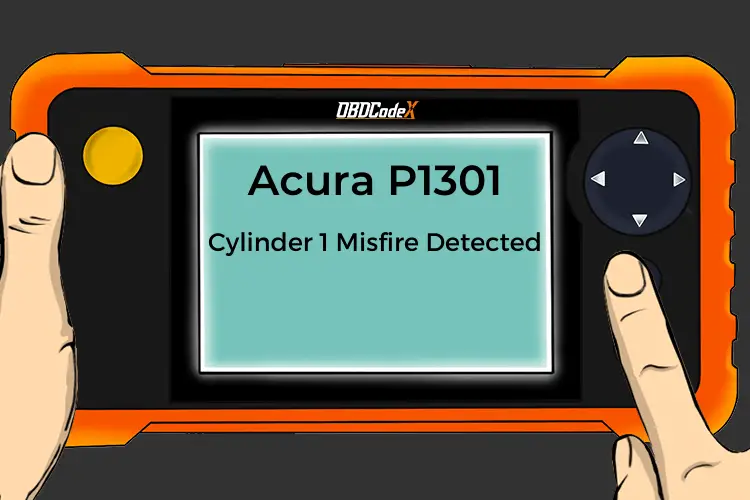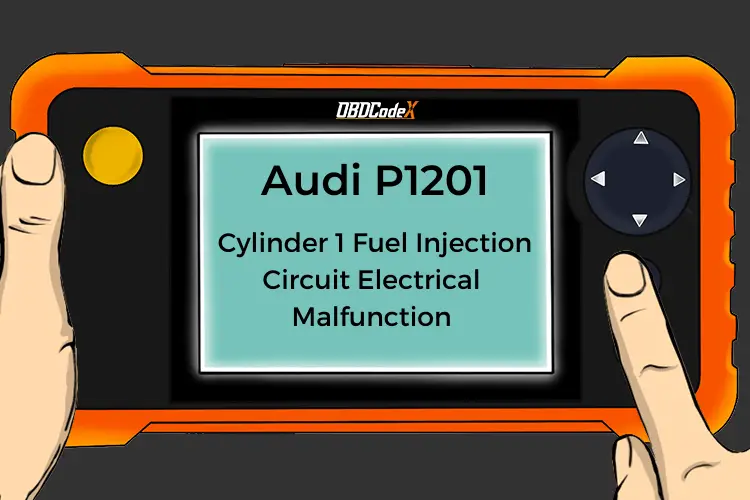P3407: Cylinder 1 Exhaust Valve Control Circuit Low
Is your scanner showing P3407?
No worries. We'll show you what it means and how to deal with it.
P3407: Cylinder 1 Exhaust Valve Control Circuit Low
OVERVIEWWhat Does The P3407 Code Mean?
OBD-II trouble code P3407 and related codes P3405, P3406 and P3408 are associated with the cylinder 1 exhaust valve control circuit.
The purpose of the cylinder 1 exhaust valve control circuit is to turn off the exhaust valve to accommodate the cylinder deactivation feature (e.g. V4 mode of a V8 engine) to improve fuel economy during light load operation at idle or on the highway. The Engine Control Module (ECM) controls the 4 or 8 cylinder modes of the engine deactivating four of the engine cylinders. This process is accomplished by incorporating variable valve timing solenoids that turn the exhaust valves on and off as required.
This code pertains to the number 1 cylinder and the other three cylinders in this process are determined by the engine configuration and the firing order of the cylinders. The ECM will limit cylinder deactivation to a cycle time of 10 minutes in V4 mode, and then return to V8 mode for 1 minute. The number 1 cylinder variable valve timing solenoid is mounted on or near the exhaust manifold in the vicinity of that cylinder based of the specific configuration and vehicle.
When the ECM detects voltage or resistance within the cylinder 1 exhaust valve control circuit, that is too low, below the normal range threshold, code P3407 will be set and the check engine light, service engine soon light or both may be illuminated. In some circumstances, the ECM may disable the injector to the number 1 cylinder until the issue is corrected and the code has been cleared causing a noticeable engine misfire.
What Are The Symptoms Of The P3407 Code?
Symptoms of a P3407 trouble code may include:
- Increased fuel consumption
- Poor engine performance
- Engine misfire
- Service engine soon light illuminated
- Check engine light illuminated
What Are The Potential Causes Of The P3407 Code?
Causes for this P3407 code may include:
- Faulty variable valve timing solenoid
- Low engine oil level or pressure
- Restricted oil passage
- Faulty or damaged wiring
- Corroded, damaged or loose connector
- Defective ECM
How Serious Is This P3407 Code?
The severity of this code can vary tremendously from moderate to severe depending on the specific symptoms of the malfunction. A misfire requires immediate attention because it can cause permanent damage to internal engine components.
How Can You Fix The P3407 Code?
The first step in the troubleshooting process for any malfunction is to research the Technical Service Bulletins (TSB’s) for the specific vehicle by year, model and engine. This can save you time and money because it is basically a known fix for a known issue.
The second step is to check the condition of the engine oil and confirm it is serviced to the appropriate level. Then locate all components associated with the cylinder 1 exhaust valve control circuit and look for obvious physical damage. Based on the specific vehicle, this circuit may incorporate several components including the variable valve timing solenoid, switches, fault indicators and the ECM. Perform a thorough visual inspection to check the associated wiring for obvious defects such as scraping, rubbing, bare wires, or burn spots.
Next is to check the connectors and connections for security, corrosion and damaged pins. Consult the specific technical data for the vehicle to verify the configuration and identify every component incorporated within the cylinder 1 exhaust valve control circuit.
Advanced Steps
The advanced steps become very vehicle specific and require the appropriate advanced equipment to perform accurately. These procedures require a digital multi meter and the specific technical references for the vehicle. In this situation, an oil pressure gauge may also facilitate the troubleshooting process to confirm an oil passage restriction.
Voltage Checks
The reference voltage and the acceptable ranges may vary based on the specific vehicle and the circuit configuration. Specific technical data will include troubleshooting charts and the appropriate sequence to follow assisting you with an accurate diagnosis.
If this process identifies the absence of a power source or ground, continuity testing may be required to check the integrity of the wiring, connectors and other components. Continuity tests should always be performed with the power removed from the circuit and the normal readings for wiring and connections should be 0 ohms of resistance. Resistance or no continuity is an indication of faulty wiring that is open, shorted or corroded and must be repaired or replaced.
Recommended Parts
Below are some recommended auto parts to help you address the trouble code affecting your vehicle and get it running smoothly again:
>>> Camshaft Variable Valve Timing Solenoid
>>> Engine Oil
>>> WORKPRO 582-piece Crimp Terminals, Wire Connectors, Heat Shrink Tube, Electrical Repair Kit
>>> ECU
Note: During the purchasing process, please check carefully whether the part you want to buy fits your car!
Reference Sources
P3407 Cylinder 1 Exhaust Valve Control Circuit Low, OBD-Codes.




